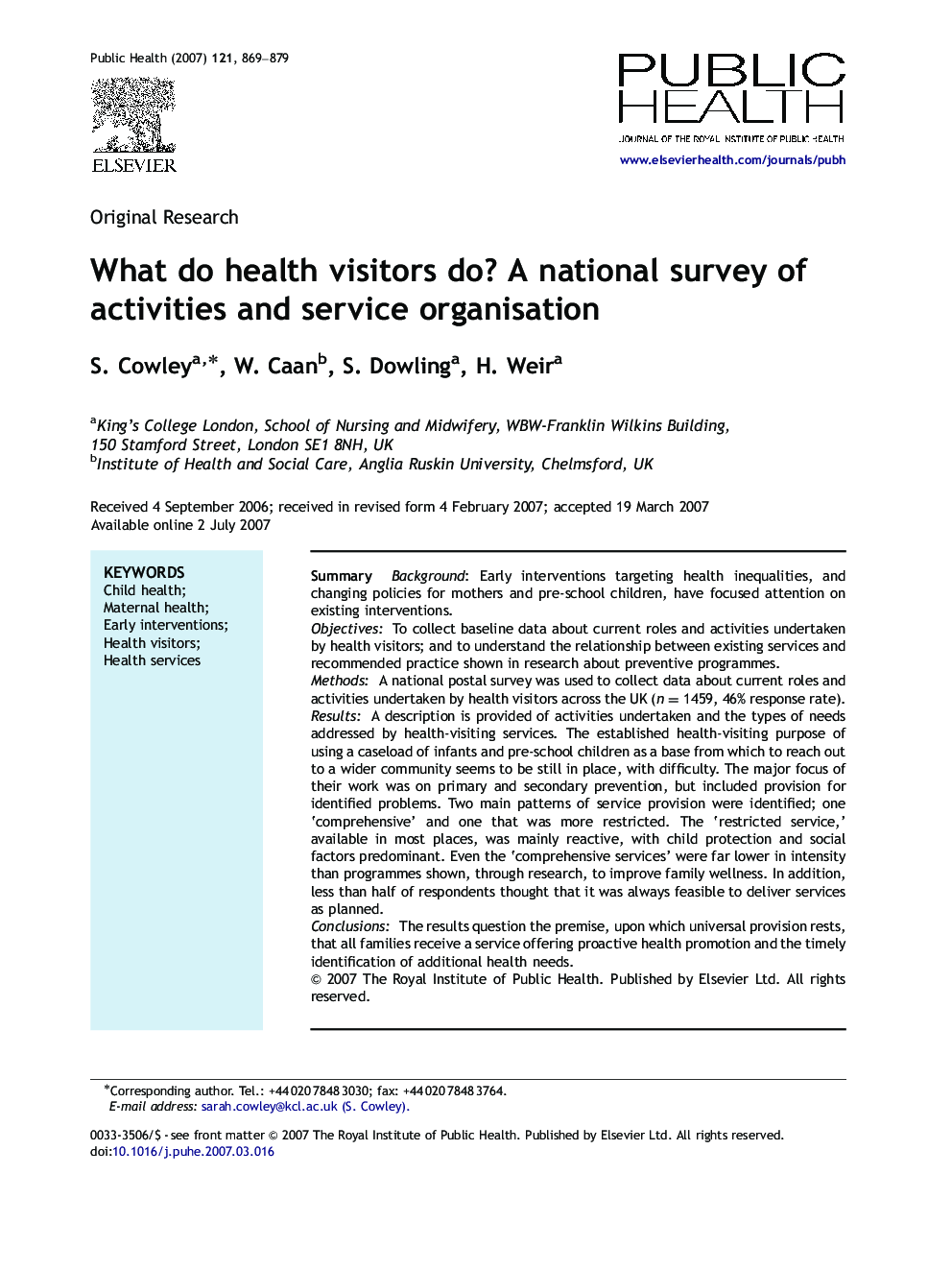| Article ID | Journal | Published Year | Pages | File Type |
|---|---|---|---|---|
| 1089209 | Public Health | 2007 | 11 Pages |
SummaryBackground: Early interventions targeting health inequalities, and changing policies for mothers and pre-school children, have focused attention on existing interventions.ObjectivesTo collect baseline data about current roles and activities undertaken by health visitors; and to understand the relationship between existing services and recommended practice shown in research about preventive programmes.MethodsA national postal survey was used to collect data about current roles and activities undertaken by health visitors across the UK (n=1459n=1459, 46% response rate).ResultsA description is provided of activities undertaken and the types of needs addressed by health-visiting services. The established health-visiting purpose of using a caseload of infants and pre-school children as a base from which to reach out to a wider community seems to be still in place, with difficulty. The major focus of their work was on primary and secondary prevention, but included provision for identified problems. Two main patterns of service provision were identified; one ‘comprehensive’ and one that was more restricted. The ‘restricted service,’ available in most places, was mainly reactive, with child protection and social factors predominant. Even the ‘comprehensive services’ were far lower in intensity than programmes shown, through research, to improve family wellness. In addition, less than half of respondents thought that it was always feasible to deliver services as planned.ConclusionsThe results question the premise, upon which universal provision rests, that all families receive a service offering proactive health promotion and the timely identification of additional health needs.
